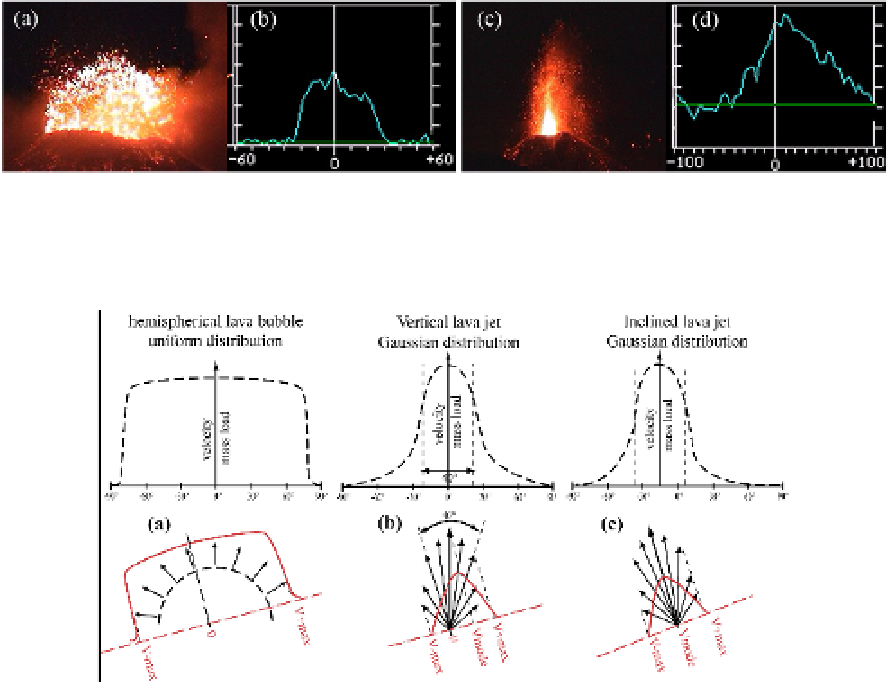Geoscience Reference
In-Depth Information
Fig. 7. Shapes of Doppler spectra associated with Strombolian activity. Outburst of a
hemispherical lava bubble (a) and associated top-hat Doppler spectrum (b) at Etna's SE
Crater (04/07/2001, 21:43'06). (c) Vertical lava jet at Laghetto (29/07/2001, 21:20'56) and the
recorded triangular spectrum (d) (power in dBW vs. radial velocity in m/s).
Fig. 8. Ejecta angular distributions (
top
) for lava bubbles (a), vertical jets (b) and inclined jets
(c) and associated characteristics of Doppler spectra in red (
bottom
). (a): similar to Fig. 7a &
7b; (b): similar to Fig. 7c & 7d; (c): case of a jet inclined toward the radar.
All intermediary types of pyroclast ejection may exist, including lava jets with low
directivity, leading to varied spectrum shapes. The latter can be further complicated by
other factors related to the lava state in the conduit and crater, or to gas slug characteristics
(overpressure, length) that may enhance fragmentation and produce more fine particles
more closely coupled to the gas dynamics.
5.1.2 Inclination of lava jets
Strombolian activity is often imagined as an axi-symmetric dispersion of ejecta around the
vertical, but departures are frequently observed from one explosion to another, and ejection
in a preferential direction may even persist if conduit conditions are favorable. Relative
variations of the ejecta dispersion axis from the vertical, i.e. the inclination of lava jets or
lava bubble outburst, can be tracked from the mode of the radial velocities, i.e. the velocity
associated with the maximum power in the main range gate (Fig. 8b,c). The velocity mode is
shifted toward the maximum negative radial velocities (aiming upward) when the lava jet
has an inclination component toward the radar (Fig. 8c) and vice versa. The power
distribution in contiguous gates also puts constraints on the ejection geometry and





